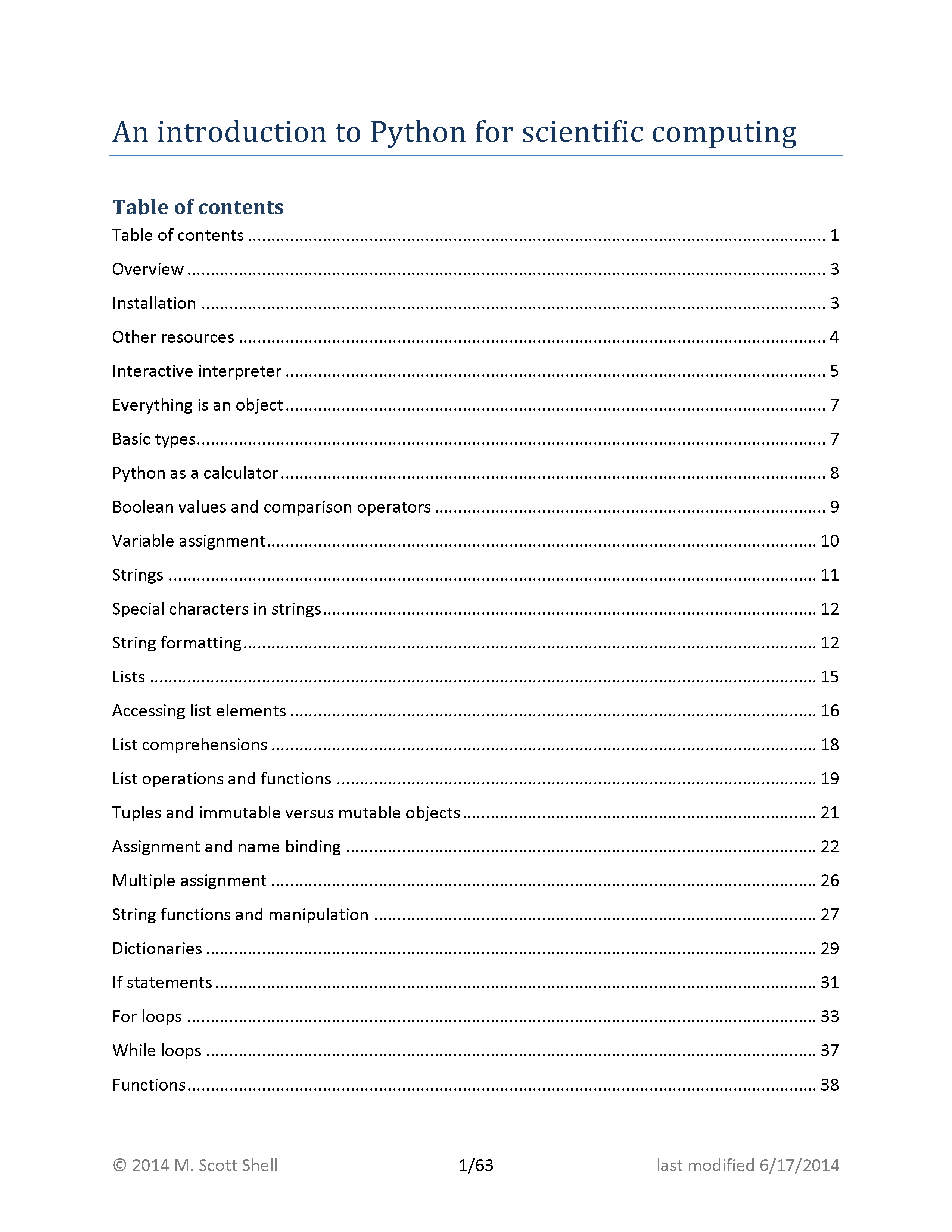
An Introduction To Python For Scientific Computing
This text covers standard modules pre-loaded in Python, including packages for common mathematical and numerical routines.
Tag(s): Python
Publication date: 31 Dec 2014
ISBN-10: n/a
ISBN-13: n/a
Paperback: n/a
Views: 14,146
Type: N/A
Publisher: n/a
License: n/a
Post time: 02 Feb 2016 02:24:13
An Introduction To Python For Scientific Computing
 This text covers standard modules pre-loaded in Python, including packages for common mathematical and numerical routines.
This text covers standard modules pre-loaded in Python, including packages for common mathematical and numerical routines.
Tag(s):
Python
Publication date: 31 Dec 2014
ISBN-10: n/a
ISBN-13: n/a
Paperback: n/a
Views: 14,146
Document Type: N/A
Publisher: n/a
License: n/a
Post time: 02 Feb 2016 02:24:13
Publication date: 31 Dec 2014
ISBN-10: n/a
ISBN-13: n/a
Paperback: n/a
Views: 14,146
Document Type: N/A
Publisher: n/a
License: n/a
Post time: 02 Feb 2016 02:24:13
Excerpts from the Overview:
Python is an extremely usable, high-level programming language that is quickly becoming a standard in scientific computing. It is open source, completely standardized across different platforms (Windows / MacOS / Linux), immensely flexible, and easy to use and learn. Programs written in Python are highly readable and often much shorter than comparable programs written in other languages like C or Fortran. Moreover, Python comes pre-loaded with standard modules that provide a huge array of functions and algorithms, for tasks like parsing text data, manipulating and finding files on disk, reading/writing compressed files, and downloading data from web servers. Python is also capable of all of the complex techniques that advanced programmers expect, like object orientation.
Python is somewhat different than languages like C, C++, or Fortran. In the latter, source code must first be compiled to an executable format before it can be run. In Python, there is no compilation step; instead, source code is interpreted on the fly in a line-by-line basis. That is, Python executes code as if it were a script. The main advantage of an interpreted language is that it is flexible; variables do not need to be declared ahead of time, and the program can adapt on-the-fly. The main disadvantage, however, is that numerically-intensive programs written in Python typically run slower than those in compiled languages. This would seem to make Python a poor choice for scientific computing; however, time-intensive subroutines can be compiled in C or Fortran and imported into Python in such a manner that they appear to behave just like normal Python functions.
Tweet
About The Author(s)
No information is available for this author.
Book Categories
Computer Science
Introduction to Computer Science
Introduction to Computer Programming
Algorithms and Data Structures
Artificial Intelligence
Computer Vision
Machine Learning
Neural Networks
Game Development and Multimedia
Data Communication and Networks
Coding Theory
Computer Security
Information Security
Cryptography
Information Theory
Computer Organization and Architecture
Operating Systems
Image Processing
Parallel Computing
Concurrent Programming
Relational Database
Document-oriented Database
Data Mining
Big Data
Data Science
Digital Libraries
Compiler Design and Construction
Functional Programming
Logic Programming
Object Oriented Programming
Formal Methods
Software Engineering
Agile Software Development
Information Systems
Geographic Information System (GIS)
Mathematics
Mathematics
Algebra
Abstract Algebra
Linear Algebra
Number Theory
Numerical Methods
Precalculus
Calculus
Differential Equations
Category Theory
Proofs
Discrete Mathematics
Theory of Computation
Graph Theory
Real Analysis
Complex Analysis
Probability
Statistics
Game Theory
Queueing Theory
Operations Research
Computer Aided Mathematics
Supporting Fields
Web Design and Development
Mobile App Design and Development
System Administration
Cloud Computing
Electric Circuits
Embedded System
Signal Processing
Integration and Automation
Network Science
Project Management
Operating System
Programming/Scripting
Ada
Assembly
C / C++
Common Lisp
Forth
Java
JavaScript
Lua
Rexx
Microsoft .NET
Perl
PHP
R
Python
Rebol
Ruby
Scheme
Tcl/Tk
Miscellaneous
Sponsors